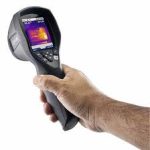 As a Marine Surveyor 33418 for Suncoast Marine Surveying, I have encountered a variety of issues with life rafts and emergency gear on vessels. These essential safety items are crucial to ensuring the well-being of passengers and crew in emergency situations, so it is important to keep them properly maintained and serviced. In this article, we will discuss some common issues that I have come across during my inspections.
As a Marine Surveyor 33418 for Suncoast Marine Surveying, I have encountered a variety of issues with life rafts and emergency gear on vessels. These essential safety items are crucial to ensuring the well-being of passengers and crew in emergency situations, so it is important to keep them properly maintained and serviced. In this article, we will discuss some common issues that I have come across during my inspections.
One of the most common issues that I find with life rafts is improper storage. Life rafts should be stored in a secure and accessible location on the vessel, but all too often I see them stowed away in hard-to-reach or cluttered areas. This can make it difficult for crew members to deploy the raft quickly in an emergency, putting everyone at risk.
Another issue that I frequently encounter as a marine surveyor 33418 is expired or improperly serviced life rafts. Just like any piece of safety equipment, life rafts require regular maintenance to ensure they are in working order. This includes annual inspections and servicing by a certified technician. If a life raft is expired or has not been serviced recently, it may not inflate properly or hold air, rendering it useless in an emergency.
In addition to life rafts, emergency gear such as EPIRBs (Emergency Position Indicating Radio Beacons) and flares are also essential for safety at sea. However, I often find that these items are either missing or outdated on vessels. EPIRBs should be registered with the proper authorities and tested regularly to ensure they will work when needed. Flares have expiration dates and should be replaced before they expire to avoid any issues in emergency situations.
Proper signage and labeling are also important aspects of emergency gear that I often see overlooked. All safety equipment should be clearly marked and easily identifiable in case of an emergency. This includes labeling on life rafts, EPIRBs, and fire extinguishers. Without proper labeling, crew members may struggle to locate the necessary equipment when time is of the essence.
Finally, one last issue that I frequently come across is improper training in the use of emergency gear. Even if a vessel is equipped with all the necessary safety equipment, it does little good if the crew members do not know how to use it effectively. Regular training drills and exercises can help ensure that everyone on board is familiar with the operation of life rafts, EPIRBs, and other emergency gear.
In conclusion, as a Marine Surveyor for Suncoast Marine Surveying, I have seen a variety of common issues with life rafts and emergency gear on vessels. From improper storage and maintenance to missing or outdated equipment, there are many potential pitfalls that can compromise safety at sea. By addressing these issues proactively and staying on top of regular maintenance and training, vessel owners can help ensure the safety and well-being of everyone on board. Remember, when it comes to safety at sea, it is always better to be prepared than sorry.


